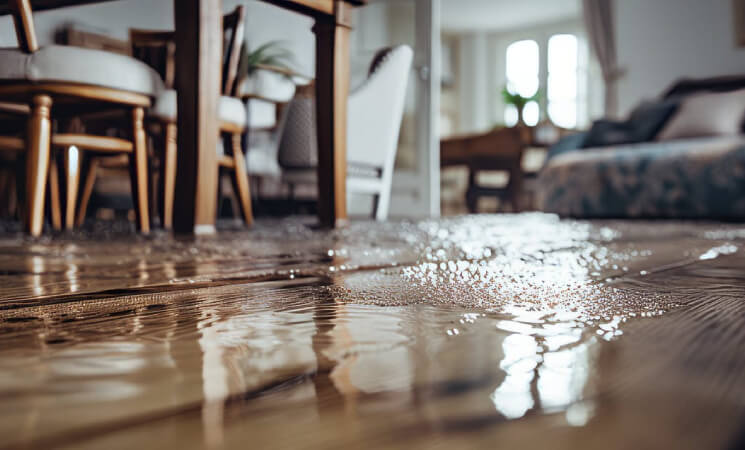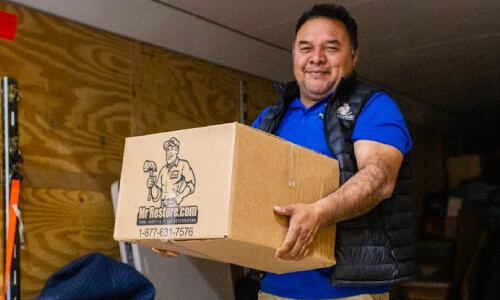Floods in Texas can be caused by a variety of factors, including heavy rains, river overflow, and strong winds. If flooding results from a serious disaster, it can cause severe damage to your home, property, and community. The first 24 hours of a flood require immediate action to avoid health risks, further damage to your property, and mold growth. Mr. Restore takes the safety of our community seriously and offers an emergency guide to help you stay safe and save money in the event of a flood.
1. Practice Safety Precautions
Your safety is the number one priority, and there are many things to consider and look out for when dealing with the aftermath of a flood in Texas.
If you have left your home due to flooding, do not re-enter your home unless it has been deemed safe by the authorities or professionals. The property’s structural integrity could be compromised due to water damage. Be on the lookout for warping walls or any cracks in the foundation. You do not want to enter a home at risk for falling objects and collapsing building materials. Be sure to turn off your fuse box and any other electrical sources to avoid the water coming in contact with electricity. Do not use anything that requires electricity.
Keep in mind that standing water can be dangerous depending on what caused the flood. Water can carry a variety of dangerous bacteria and diseases. The water may have come in contact with unsanitary factors in the environment, including garbage and sewage. Practice safety measures when dealing with flood water. If you have been given the green light by a professional to enter your home after a flood, be sure to wear protective clothing while salvaging your materials. Wear rubber boots and gloves and any other waterproof clothing you may have, as well as a face mask to prevent breathing in dangerous toxins.
2. Contact a Restoration Company
Do not attempt to clean, dry, or restore the damage caused by a flood on your own. Immediately contact a restoration company you can trust. You will need experienced professionals who own the proper equipment and have up-to-date training on how to clean and restore the damage appropriately. Contacting a restoration company for your home or business will help prevent further damage, such as mold. Mr. Restore will help you assess the damage and will work with your insurance agency.
3. Contact your Insurance Agent
Once you have contacted Mr. Restore to handle the damage, contact your insurance carrier and let them know that our team will begin the restoration process. Make sure to have your insurer’s information easily accessible such as in your phone or an online format. Mr. Restore will walk you through the claims process and will work with your carrier to ensure you are treated fairly.
4. Secure the Property
In order to prevent further damage from flooding and standing water, Mr. Restore will secure your property if needed. Securing a property can often be dangerous and require extensive labor; please do not attempt to do this on your own. If your roof has been damaged, we will work to cover the roof with a tarp. Our team will board up your windows and other openings using wood.
5. Take Pictures and Documentation
Your insurance agency will need to see an extensive overview of the damage to your home and possessions. Before you make any changes or remove any items after a flood, you should take pictures or record a video of the damages. Insurance agencies will want to know how high the standing water is in your home and the damage done to all your possessions. Make sure you take pictures after you secure the property. Insurance companies like to see if you are taking all precautions to prevent further damage to your home. If you choose to have MrRestore handle your restoration project, we will handle all photo documentation for you with our online project management system. One less thing for you to worry about!
Mr. Restore actively works to accommodate the requirements of the insurance companies by documenting all the work and taking pictures as part of the restoration process.






